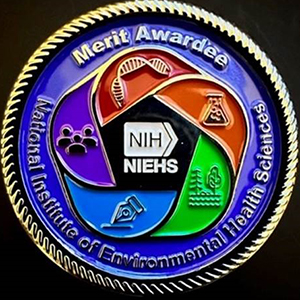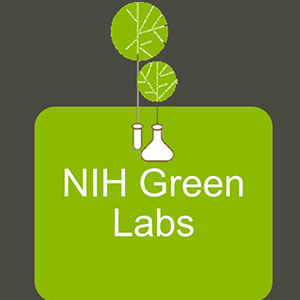Discovery Lake, the 27-acre body of water between the NIEHS campus and facilities of the U.S. Environmental Protection Agency, can now be enjoyed in a new way through the Discovery Lake Nature Trail virtual guide.
 A view of NIEHS facilities across a section of Discovery Lake. (Photo courtesy of Steve McCaw / NIEHS)
A view of NIEHS facilities across a section of Discovery Lake. (Photo courtesy of Steve McCaw / NIEHS)Joe Poccia, digital design manager for the Office of Communications and Public Liaison, along with Bill Steinmetz, from the Health and Safety Branch, and Rob Levine, from the Operations and Security Branch, worked to design new signage for the trail as well as creating a corresponding web-based tour.
More than 120 species of birds call Discovery Lake home, as well as beavers, turtles, and otters. Many of these animals can be seen from various vantage points along the trail, which can be appreciated as a 1.6-mile loop or in shorter sections. There are also several connections between the trail and the campus pedestrian pathway network that can expand the walking distance.
Small, picturesque bridges that span inlets along the lake contribute to the remarkably quiet, park-like environment. Visitors can also enjoy the lake by boating or fishing in designated areas.
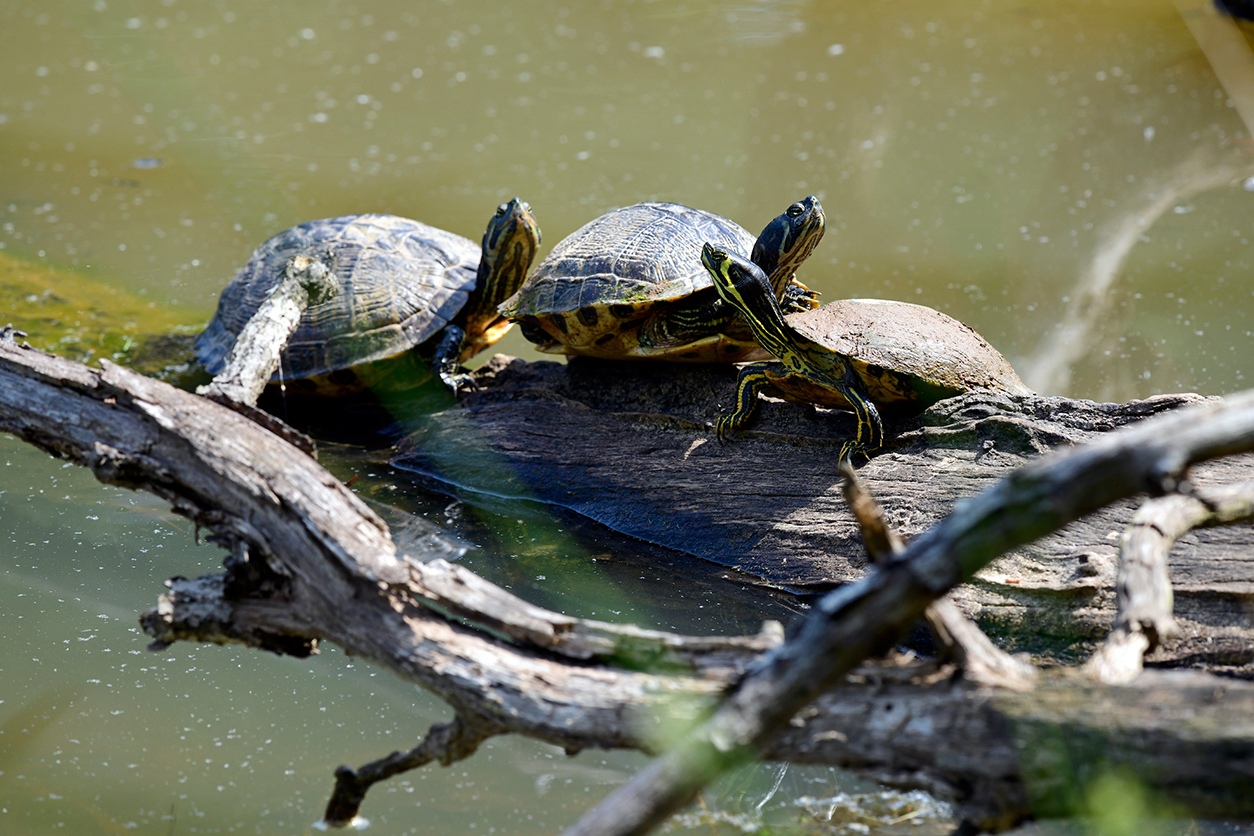 Turtles are some of the many creatures that call the lake home. (Photo courtesy of Steve McCaw / NIEHS)
Turtles are some of the many creatures that call the lake home. (Photo courtesy of Steve McCaw / NIEHS)Gaining knowledge, appreciating nature
“The new signage and virtual guide give visitors an opportunity to gain knowledge about common plant and animal species in our Discovery Lake ecosystem,” said Steinmetz, who developed the tour’s written content. “The tour information also has an underlying focus on the interaction between humans and the surrounding environment.”
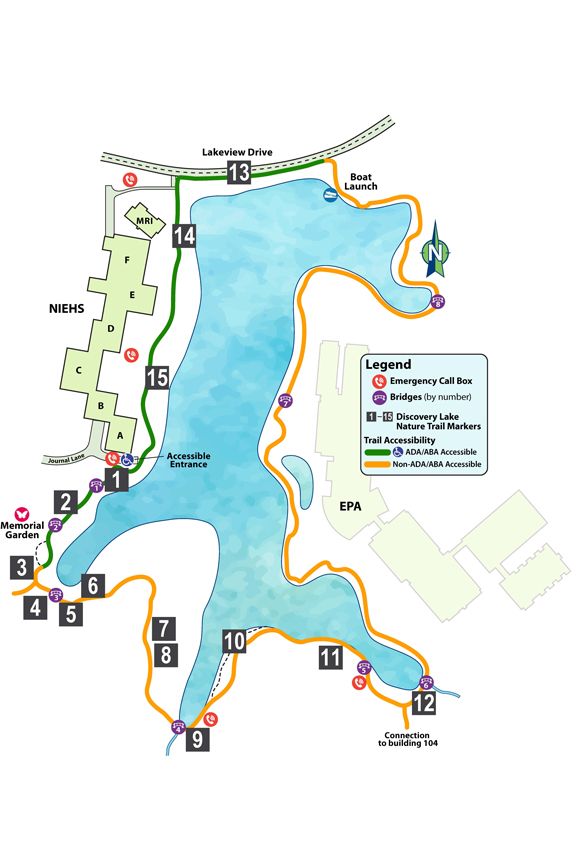 A map that accompanies the Discovery Lake self-guided walking tour and virtual guide. (Courtesy of NIEHS)
A map that accompanies the Discovery Lake self-guided walking tour and virtual guide. (Courtesy of NIEHS) Created in 1977, the lake was created originally as a stormwater catchment but has become a beloved centerpiece of the research campus.
The virtual tour was designed with big pictures and buttons to make it easy to navigate while on the move. Each marker on the map is large and clickable. Poccia said the team is in the process of installing QR codes on each of the trail markers so visitors can access the information for each location using the camera on their phones.
The web-based tour eliminates printing costs and paper waste, and it will also be easily updateable with new features, photos, and information in the future.
“For me, the guide provides places to pause along the trail, to look around, and to listen more closely than I normally would,” Poccia said. “The breadth and diversity of the natural world is astonishing, and the guide provides a starting point for exploration.”
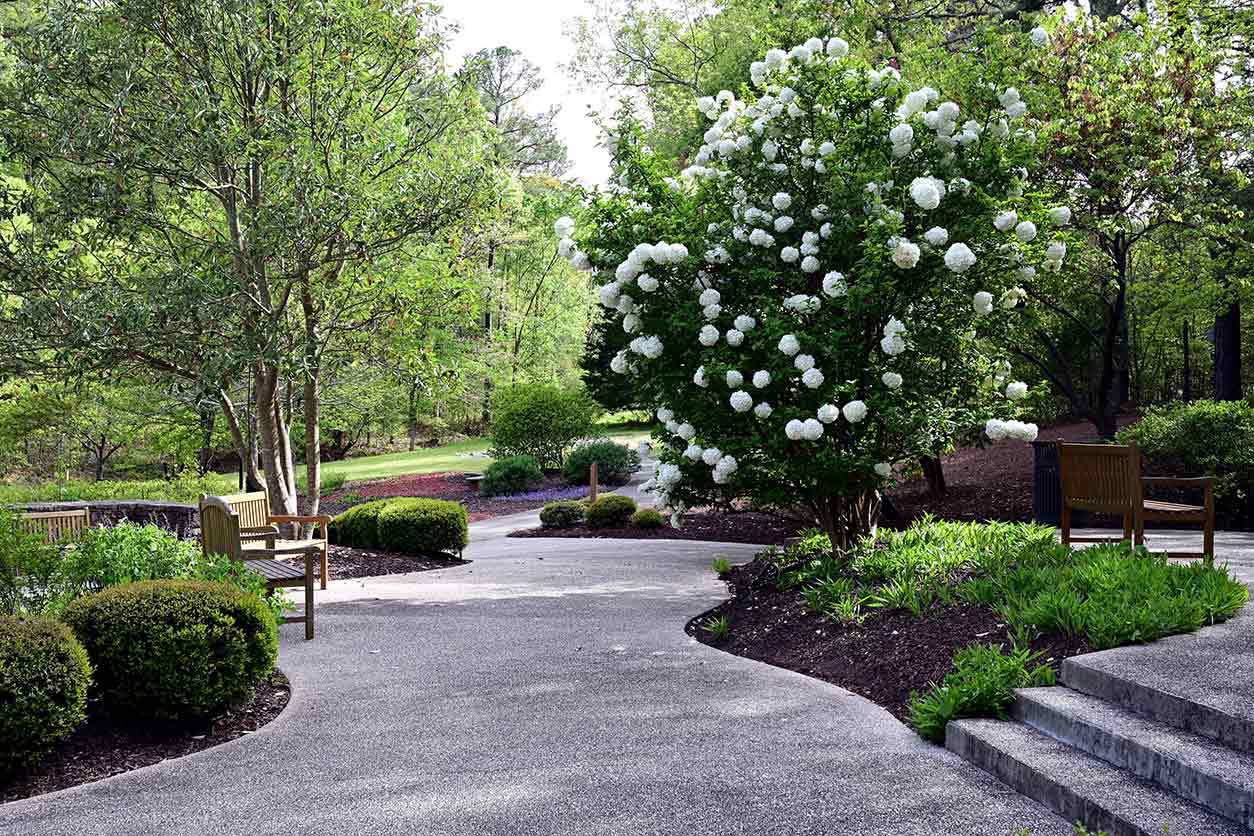 The Discovery Lake trail and connecting pathways offer stunning vistas and numerous opportunities to enjoy nature. (Photo courtesy of Steve McCaw / NIEHS)
The Discovery Lake trail and connecting pathways offer stunning vistas and numerous opportunities to enjoy nature. (Photo courtesy of Steve McCaw / NIEHS)(Kelley Christensen is a contract writer and editor for the NIEHS Office of Communications and Public Liaison.)








